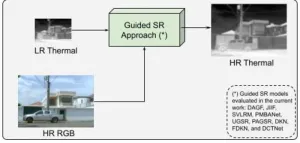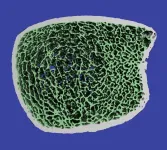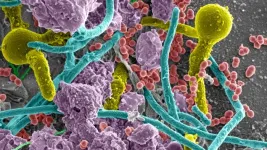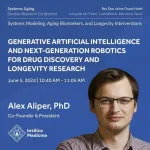(Press-News.org) Trust is vital to the widespread acceptance of AI across industries, especially when safety is a concern. For example, people may be hesitant to ride in a self-driving car knowing that the AI running it can be hacked. One barrier to increasing trust is that the algorithms powering AI are vulnerable to such attacks.
Dr. Samson Zhou, assistant professor in the Department of Computer Science and Engineering at Texas A&M University, and Dr. David P. Woodruff, professor in the Computer Science Department at Carnegie Mellon University, hope to strengthen algorithms used by big data AI models against attacks. Big data AI models are scalable algorithms that are specifically designed to handle and analyze large volumes of data.
Zhou and Woodruff are a long way off from creating algorithms that are completely robust against attacks, but they aim to make progress. The two received a grant from the National Science Foundation for their work.
“It’s definitely a long-term goal to give people an algorithm that comes with a guarantee behind it,” Woodruff said. “We’d like to be able to say, ‘We promise you that this algorithm is robust against adversaries,’ meaning that no matter how many queries you make to this algorithm it’s still going to give you the correct answer,” Woodruff said.
“People are scared to go into self-driving cars when they know an adversary can cause the car to have an accident,” Zhou said. “We hope that our work will be one step in inspiring confidence towards algorithms.”
Zhou and Woodruff’s research focuses on a type of big data model called a streaming model. With a streaming model, information and insights must be gleaned from the data right away or they will be lost because all the data cannot be stored. Common examples of streaming models are apps that provide real-time information to users, like a public transportation app that shows the current location of buses on a route.
Challenges to Creating Secure Algorithms
One challenge researchers face when trying to create a secure algorithm is randomness. Think of an algorithm as a set of instructions for AI. Randomness is included in these instructions to save space. However, when randomness is included, the engineers of an algorithm don’t have a complete picture of the algorithm’s inner workings, leaving the algorithm open to attack.
“Any algorithm that uses randomness can be attacked because the attacker kind of learns your randomness through its interaction with you” Woodruff said. “And if [the attacker] knows something about your randomness, it can find things to feed your algorithm and force it to fail.”
Woodruff compared manipulating algorithms to manipulating coin tosses: “You might have a sequence of coin tosses in your algorithm, and that sequence is really good for solving most problems. But if the attacker knew that sequence of coin tosses, it could find exactly the right input that causes the result to be bad,” Woodruff said.
There are also different types of attacks. Sometimes the only thing attackers know about an algorithm is how it responds to queries. In this case, attackers base future queries on the algorithm’s previous output. This is called a black box attack. When attackers know the entire state of the algorithm, its inner workings and how it responds, that is a white box attack. Zhou and Woodruff want to defend against both.
“Attackers that know the internal parameters of an algorithm seem like much more powerful adversaries,” Zhou said. “But we’re actually able to show that there are still interesting things that can be done to defend against them.”
Future Research
In creating an algorithm that will be robust against attack, Zhou and Woodruff plan to develop new connections between mathematics and theoretical computer science. They will also look to the field of cryptography (data encryption) for ideas. Through their research, they hope to understand how to strengthen algorithms against attack while maintaining efficiency. They want to identify principles underlying vulnerabilities in algorithms.
Zhou and Woodruff know it will be difficult to prove that an algorithm is robust against infinite types of attack and that the algorithm will reliably give an accurate answer.
“Sometimes it’s not possible to design algorithms to guarantee adversarial robustness,” Zhou said. “Sometimes there is no way to promote adversarial robustness if you don’t have enough space. In that case, we should stop trying to design algorithms that meet these guarantees and instead look for other ways around these problems.”
Zhou and Woodruff ultimately hope to write a monograph based on their work.
By Amanda Norvelle, Texas A&M Engineering
END
How researchers are protecting AI of the future
Researchers at Texas A&M University and Carnegie Mellon University are promoting a safer future with AI by strengthening algorithms against attack
2024-05-31
ELSE PRESS RELEASES FROM THIS DATE:
Enhancement of guided thermal image super-resolution approaches
2024-05-31
Researchers of CIDIS at ESPOL Polytechnic University have developed a new method to enhance thermal image super-resolution by employing synthetic imagery. This novel approach utilizes high-resolution images from the visible spectrum to guide the super-resolution of low-resolution thermal images, significantly improving the detail and utility of thermal imaging across various applications.
When visualizing thermal images, one typically imagines the blurry, less-detailed outputs common with standard thermal ...
Virginia Tech scientists develop visual tool to help people group foods based on their levels of processing
2024-05-31
Fralin Biomedical Research Institute at VTC scientists studying ultra-processed foods have created a new tool for assessing the rewarding and reinforcing properties of foods that make up 58 percent of calories consumed in the United States. The foods have been linked to a wide range of negative health outcomes.
The research, which was published in April in the journal Appetite, provides a collection of carefully curated images of minimally processed and ultra-processed foods matched on 26 characteristics, including macronutrients, sodium, dietary fiber, calories, price, and visual characteristics such as a color and portion size.
The work was based on the NOVA classification system ...
Glimpses of a volcanic world: New telescope images of Jupiter's moon Io rival those from spacecraft
2024-05-31
New images of Jupiter's volcano-studded moon Io, taken by the Large Binocular Telescope on Mount Graham in Arizona, offer the highest resolution of Io ever achieved with an Earth-based instrument. The observations were made possible by a new high-contrast optical imaging instrument, dubbed SHARK-VIS, and the telescope's adaptive optics system, which compensates for the blurring induced by atmospheric turbulence.
The images, to be published in the journal Geophysical Research Letters, reveal surface features as small as 50 miles across, ...
Wake Forest University School of Medicine awarded $1.5 million from NIH to use advanced imaging to assess bone loss after bariatric surgery
2024-05-30
WINSTON-SALEM, N.C. – May 30, 2024 – Researchers at Wake Forest University of School of Medicine have received a five-year, $1.5 million grant from the National Institute of Arthritis and Musculoskeletal and Skin Diseases, part of the National Institutes of Health (NIH), to study bone microarchitecture in patients following bariatric surgery.
With the funding support, researchers at Wake Forest University School of Medicine will partner with Virginia Tech to add a virtual biopsy that uses an innovative technique called high-resolution peripheral quantitative ...
Researchers identify factors that heighten risk for catheter-associated urinary tract infections and sepsis
2024-05-30
Urinary catheters are required for nearly every surgical procedure. However, a major challenge for the health care industry is predicting who may develop catheter-associated urinary tract infections (CAUTIs) and when these infections may lead to death.
Now, a study from the University of Notre Dame has identified a population that is more susceptible to developing a CAUTI.
Researchers showed that models with fibrinolytic deficiencies, or conditions that cause overactivation of the protein fibrin, had increased risk for developing severe and persistent CAUTIs. ...
How community stress affects Black Americans’ mental health and wellbeing
2024-05-30
URBANA, Illinois – Residential segregation is an example of the long history of structural racism in the United States. Black Americans are more likely to live in low-quality neighborhoods, which contributes to disparities in health outcomes. A new study from the University of Illinois Urbana-Champaign looks at how community stress affects the mental and emotional health of Black men and women in the U.S.
“Community stress refers to the effects of living in disadvantaged areas. This includes objective aspects, such as buildings ...
Every drop counts: New algorithm tracks Texas daily reservoir evaporation rates
2024-05-30
Summer can be an extra challenging time for Texas’ 189 major water supply reservoirs. With temperatures consistently reaching 100 degrees or higher, reservoir evaporation rates see high increases.
Accurate evaporation rate estimates are crucial for water resource managers, as reservoirs play an essential role in our social and economic systems by supplying water for agricultural, municipal, and industrial consumption. Reservoirs are also critical for mitigating impacts from droughts and floods.
A recent study published ...
Study: Access to targeted lung cancer drug is cost-prohibitive globally
2024-05-30
MIAMI, FLORIDA (May 30, 2024) – Many countries with national healthcare systems or payers such as insurance companies use cost-effectiveness analyses to decide whether to cover new medicines, balancing treatment costs with potential health benefits.
That strategy often limits access to new, targeted therapies, even when these drugs prove highly effective and become part of standard-of-care therapy for many patients.
A new study from Sylvester Comprehensive Cancer Center at the University of Miami Miller School of Medicine examined the cost-effectiveness of durvalumab, a targeted immunotherapy for lung cancer that ...
Insilico Medicine President Alex Aliper, Ph.D. to present at Systems Aging Gordon Research Conference
2024-05-30
Alex Aliper, PhD, president of global clinical stage artificial intelligence (AI)-powered drug discovery company Insilico Medicine (“Insilico”) will present at the Systems Aging Gordon Research Conference, a leading international scientific conference focused on advancing the frontiers of science through the presentation of cutting-edge and unpublished research. On Wed., June 5, 10:40 am, Dr. Aliper will give a talk titled "Generative Artificial Intelligence and Next-Generation Robotics for Drug Discovery and Longevity Research."
The conference ...
ESA announces recipients of 2024 Awards
2024-05-30
The Ecological Society of America is pleased to announce the winners of its 2024 awards, which recognize outstanding contributions to ecology in new discoveries, teaching, sustainability, diversity and lifelong commitment to the profession.
These awards are designed to not only reward past achievements, but also to inspire a broad audience of scientists, educators and students, opening the door to new insights and collaborations that will further the impact of ecological research.
“The Ecological Society of America is immensely proud to honor this year’s distinguished awardees,” said ESA President ...
LAST 30 PRESS RELEASES:
Numbers in our sights affect how we perceive space
SIMJ announces global collaborative book project in commemoration of its 75th anniversary
Air pollution exposure and birth weight
Obstructive sleep apnea risk and mental health conditions among older adults
How talking slows eye movements behind the wheel
The Ceramic Society of Japan’s Oxoate Ceramics Research Association launches new international book project
Heart-brain connection: international study reveals the role of the vagus nerve in keeping the heart young
Researchers identify Rb1 as a predictive biomarker for a new therapeutic strategy in some breast cancers
Survey reveals ethical gaps slowing AI adoption in pediatric surgery
Stimulant ADHD medications work differently than thought
AI overestimates how smart people are, according to HSE economists
HSE researchers create genome-wide map of quadruplexes
Scientists boost cell "powerhouses" to burn more calories
Automatic label checking: The missing step in making reliable medical AI
Low daily alcohol intake linked to 50% heightened mouth cancer risk in India
American Meteorological Society announces Rick Spinrad as 2026 President-Elect
Biomass-based carbon capture spotlighted in newly released global climate webinar recording
Illuminating invisible nano pollutants: advanced bioimaging tracks the full journey of emerging nanoscale contaminants in living systems
How does age affect recovery from spinal cord injury?
Novel AI tool offers prognosis for patients with head and neck cancer
Fathers’ microplastic exposure tied to their children’s metabolic problems
Research validates laboratory model for studying high-grade serous ovarian cancer
SIR 2026 delivers transformative breakthroughs in minimally invasive medicine to improve patient care
Stem Cell Reports most downloaded papers of 2025 highlight the breadth and impact of stem cell research
Oxford-led study estimates NHS spends around 3% of its primary and secondary care budget on the health impacts of heat and cold in England
A researcher’s long quest leads to a smart composite breakthrough
Urban wild bees act as “microbial sensors” of city health.
New study finds where you live affects recovery after a hip fracture
Forecasting the impact of fully automated vehicle adoption on US road traffic injuries
Alcohol-related hospitalizations from 2016 to 2022
[Press-News.org] How researchers are protecting AI of the futureResearchers at Texas A&M University and Carnegie Mellon University are promoting a safer future with AI by strengthening algorithms against attack










